Knott your America (1995)
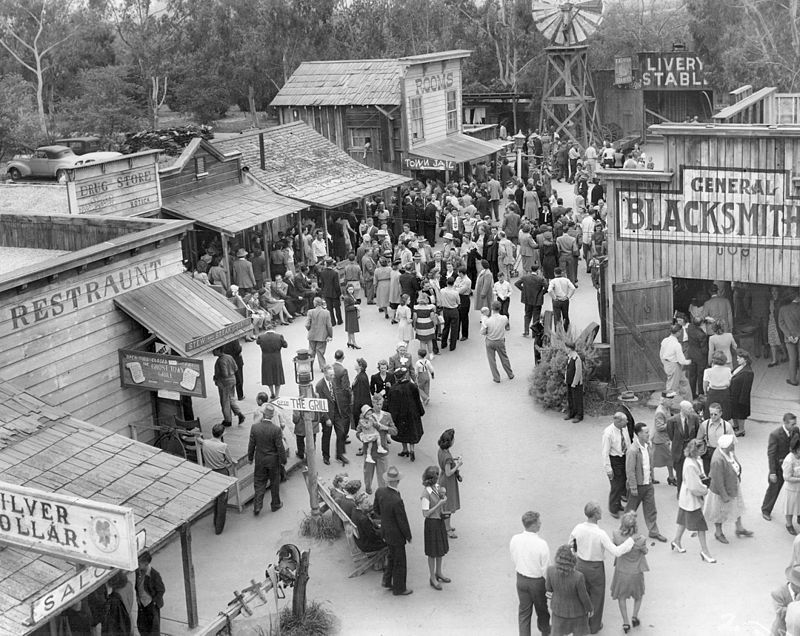
Just six miles northwest of Disneyland resided Knott’s Berry Farm – a “theme park” predating Walt’s. True to its name, Knott’s Berry Farm originated as a roadside stand on Walter and Cordelia Knott’s farmstead, with Mrs. Knott’s famous chicken dinners turning into a tourist attraction in their own right by the 1930s. The 1940s brought a historic Californian “Ghost Town” recreation, followed by a “county fair” themed section coinciding with the opening of Disneyland down the street, and – in the 1960s – a full-scale replica of Independence Hall was built by Walter Knott just across from the park’s entrance.
Suffice it to say that by the ‘90s, Knott’s Berry Farm was a full theme park in its own right, with Ghost Town, the Mexican themed Fiesta Village, the renowned Timber Mountain Log Ride and Calico Mine Ride (which would inspire Splash Mountain and Big Thunder Mountain at Disneyland), a “Roaring ‘20s” themed Boardwalk, and more.
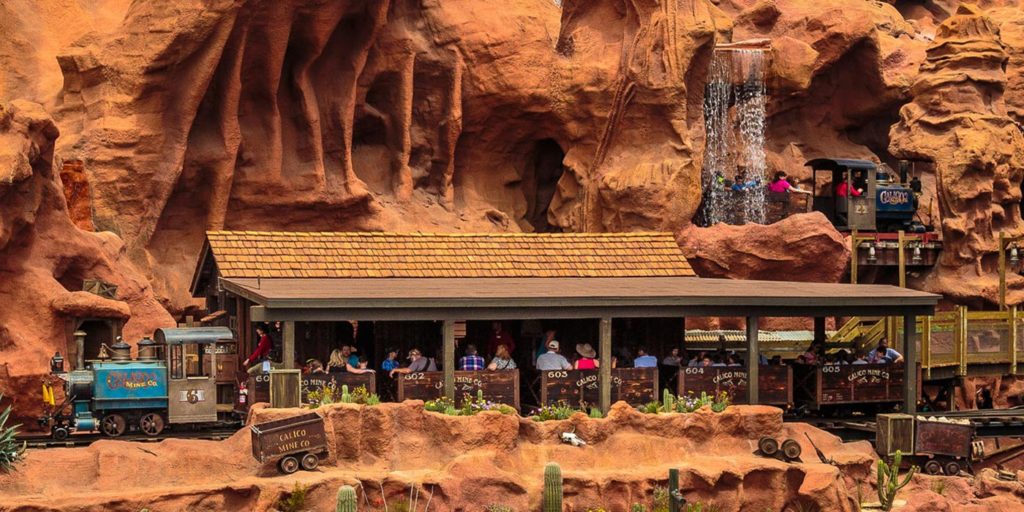
So when Walter Knott’s family put the park up for sale in the mid-1990s, executives at the Walt Disney Company saw acquisition of the park as one potential way to expand the landlocked Disneyland past its borders. Disney reportedly moved forward in negotiations, with potential plans to purchase, reskin, and rename the park as… you guessed it… Disney’s America.
Their plans allegedly included expanding the park’s entrance across Beach Blvd. to the Independence Hall recreation to form President’s Square as a new entry land (including adding the Hall of Presidents), carving the park’s fabled Mystery Lodge and rapids ride (rethemed to the Lewis & Clark River Expedition) into a new Native America territory, transforming the “Roaring 20s” into their planned Enterprise land, and more.
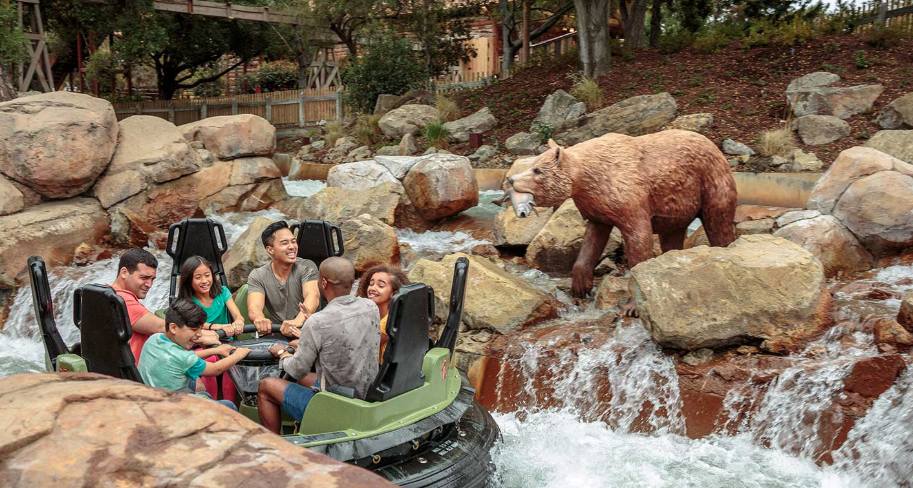
Though certainly the logistics aren’t known, it’s likely that Disney would’ve utilized busses to carry guests between the two parks – Disneyland and the “new” Disney’s America – had the sale gone through. Allegedly, the Knott family resisted Disney’s offer, fearing that their father’s legacy would be buried. In retrospect, Knott’s would’ve needed a pretty significant redevelopment to fit into Disney’s portfolio anyway.
Interestingly, the Knott family instead sold the park to Cedar Fair – today, owners of Cedar Point, Kings Island, and Kings Dominion, among others – who arguably removed much more of Walter and Cordelia’s influence than Disney would’ve, even if they retained the Knott’s name. Throughout the ’90s and early 2000s, Knott’s made the standard “Cedar Fair shift” toward bare steel coasters, turning some of Knott’s quietest, historic corners into amusement park midways.
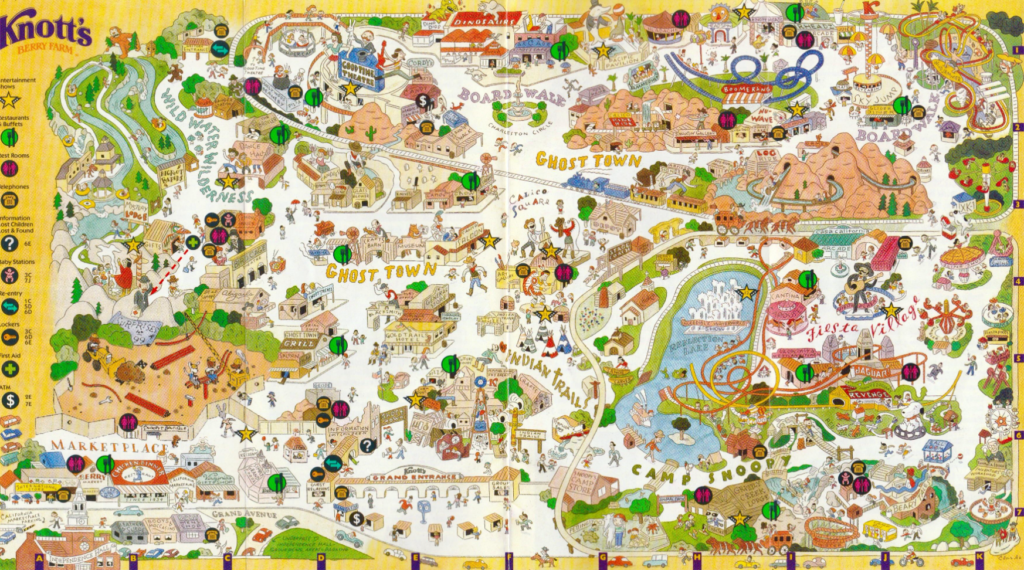
(As an aside, Knott’s Berry Farm has pivoted back from bare steel roller coasters to theming, entertainment, and dark rides in the last few years… a purposeful repositioning by 2010s Cedar Fair CEO Matt Ouimet – formerly president of Disneyland! – who was able to act on the potential he always spoke of seeing in Knott’s from six miles down the road…)
Everything old, new again (2001)

Obviously, Disney’s America has never been built, and we’d bet our bottom dollar that no Disney Park like it ever will be. But how many times in our Possibilityland entries have we learned that good ideas never die at Disney Imagineering? Such is the case with this concept, too, and many aspects one sketched out for Disney’s never-built Virginian park did find their way into the real world.
It’s no surprise, really, that quite a few concepts cooked up for Disney’s America made their way into the project Imagineers tackled next: the official second gate at Disneyland, Disney’s California Adventure. Built using Eisner’s post-Paris decree requiring little investment and few rides, the park has radically changed in its relatively short life as we told in its own epic, two part Disney’s California Misadventure story. But even after a few facelifts, the “DNA” of Disney’s America can still be seen within the park.
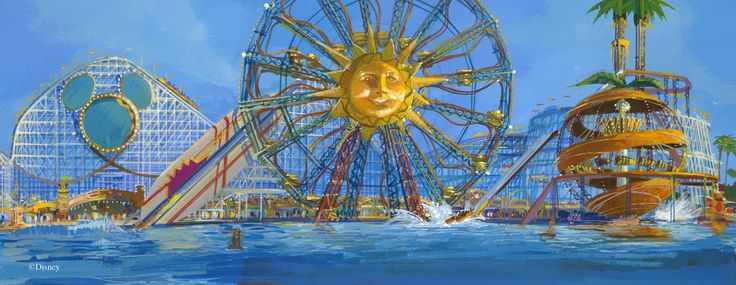
Perhaps most inherently obvious, the State Fair area was clearly reimagined with a coastal spin as Paradise Pier, one of the opening lands at Disney’s California Adventure. The steel-coaster-disguised-as-a-classic-wooden-one, carousel, and Ferris wheel are dead giveaways, even if Paradise Pier (and especially its successor, the admittedly odd Pixar Pier) dropped the fair-in-a-field style in favor of a more elegant and attractive seaside Victorian aesthetic.
The Victory Field area of militaristic aviation also made its way to California Adventure as the Condor Flats land – a “high desert” landing strip marked by industrial hangars, rocket parts, and rotating satellite dishes. Likewise, we can imagine that the wartime VR simulator gradually “evolved” into the Lost Legend: Soarin’ Over California, offering a much higher capacity.
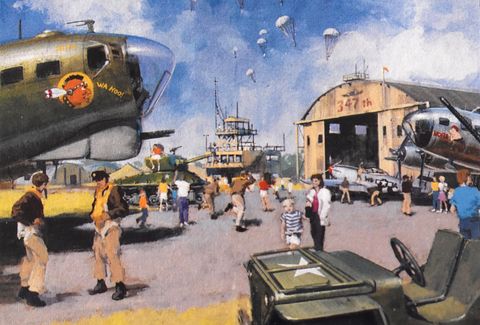
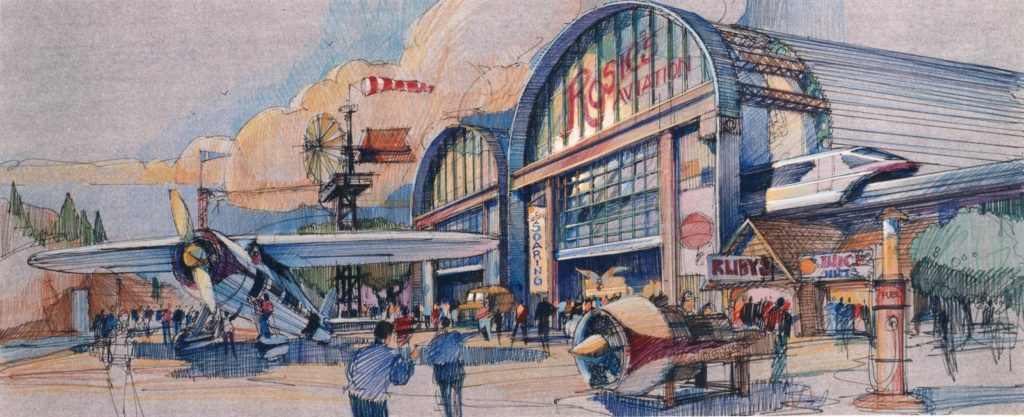
Ultimately, Condor Flats was one of the areas axed from California Adventure during its billion-dollar redesign, becoming the Grizzly Peak Airfield – a ‘50s inspired expansion of the Grizzly Peak National Park land next door, losing its desert rocks and industrial shrapnel in favor of fire watchtowers and evergreens. It’s interesting, though, that somewhere under that 1950s National Park may reside the DNA of Disney’s America…
Other influences from Disney’s America might’ve been Grizzly River Rapids as the headlining attraction of Grizzly Peak, and Bountiful Valley Farm as an interpolation of the “Family Farm” land planned for Virginia.
America, today?
Controversial, radical, and revolutionary, Disney’s America was many things to many people. At first blush, the park may feel akin to Walt’s early infatuation with Americana – more peers to Frontierland, Western River Expedition, and the Country Bear Jamboree – than fellow ‘90s projects like the “MTV attitude” infused Superstar Limo, the “ride the movies” philosophy of Indiana Jones Adventure, or the “pivot to teen thrillseekers” influence of Alien Encounter.
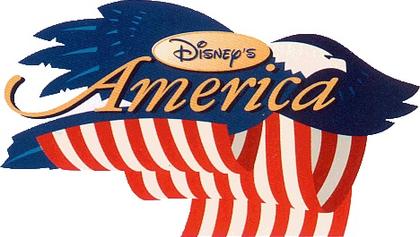
Would this proposed park have profited from the privatization of our history as detractors promised? Would it have whitewashed America’s sometimes-troubled-and-traumatic origins and growing pains? Or – perhaps worse – would Disney have actually confronted the realities of Americans’ hard-fought (and ongoing) push for freedom, “picking sides,” acting as revisionist and historian in the politicized backyard of D.C.?
Perhaps the most compelling question yet – if Disney’s America had been built, would Disney still own it? Or is the very concept of a self-serious, character-free, reverent and historic park beyond Disney’s scope of interest in the 21st century? How would Disney’s living history park grow and evolve, and indeed, would it have? Even if Disney had opted for the less-controversial “American Celebration” park, wouldn’t it have fared even worse than Epcot has? More than likely, it would still be showing the same Circlevision movies it was meant to open with in 1998.
Disney’s patriotic park was never built (and arguably, might not be around today even if it had been). But as always, Disney’s experimentation with something revolutionary did inform Imagineers’ ideas for decades to come.
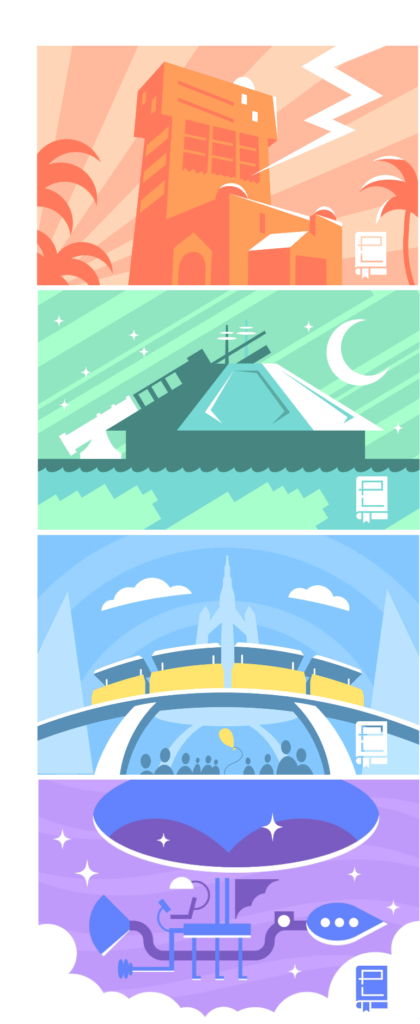
Thank you so much for reading. Now, it’s your turn to join the story. If you enjoy spending time falling down the “rabbit hole” of Park Lore’s in-depth, ad-free, member-supported stories, consider becoming a Member for as little as $2 / month.
Members can unlock rare concept art in every tale, reveal attraction audio streams in select stories, gain access to over a hundred exclusive articles in our quick-read Extra Features and in-depth Special Features collections, gain exclusive podcast extras, and receive an annual member card and merch in the mail! (Plus, y’know, supporting research-based, ad-free, clickbait-free, in-depth theme park writing!)


